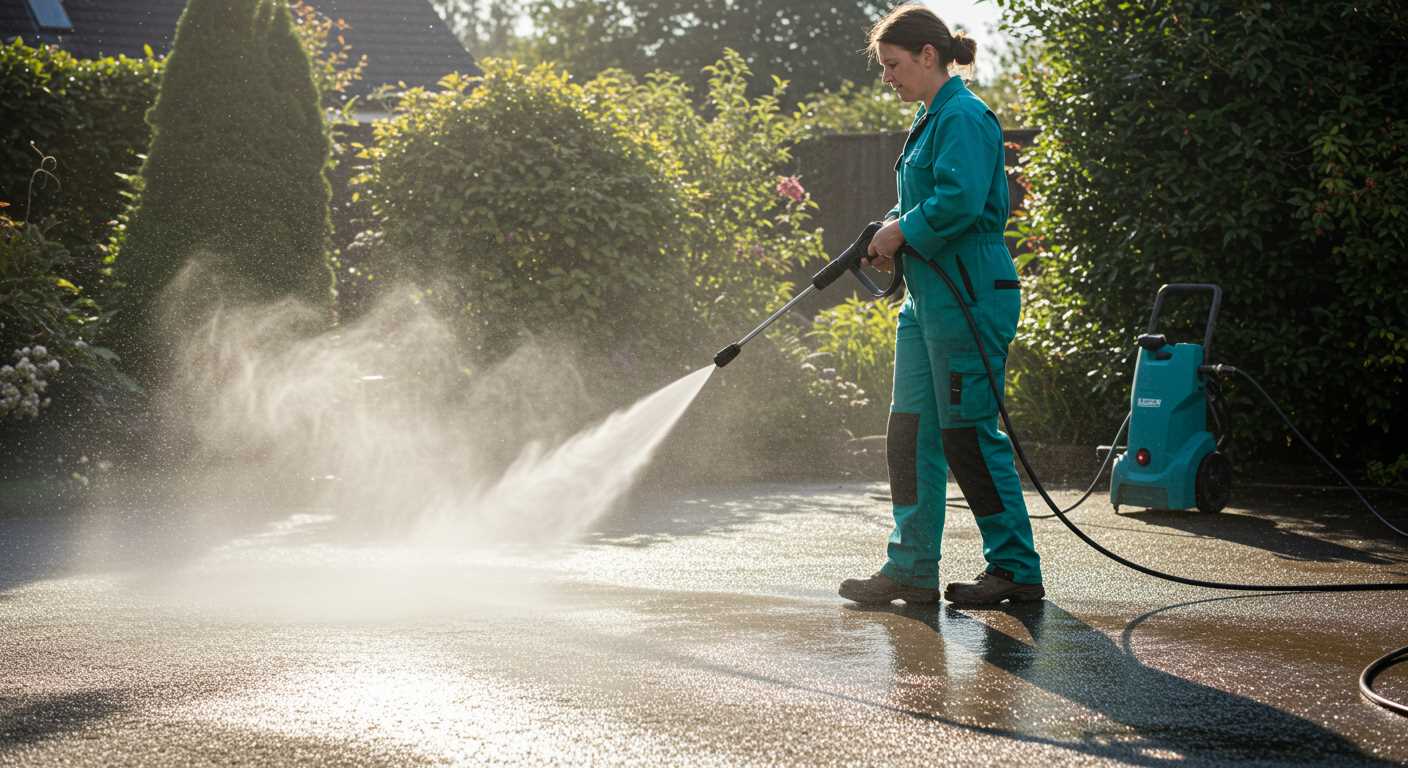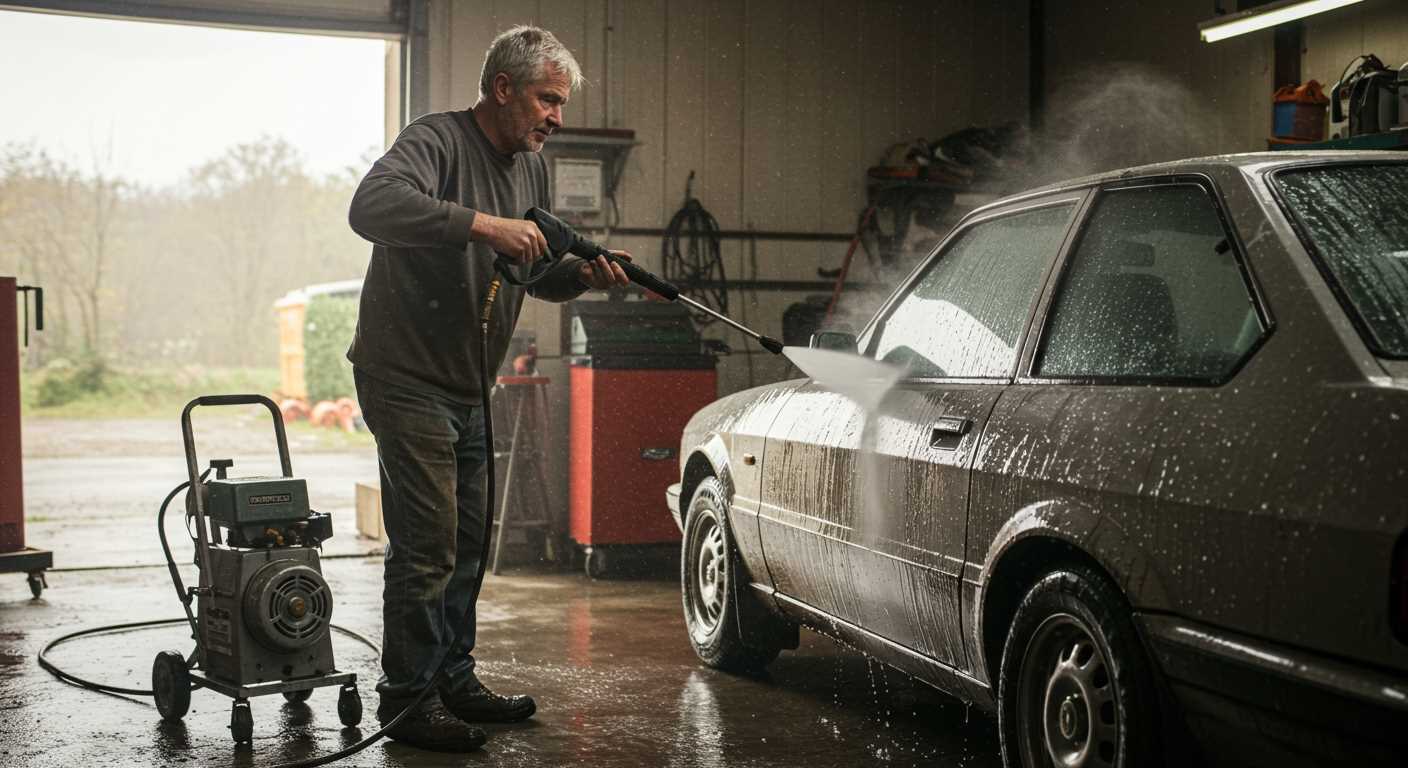




Using a broom is your first step. Sweep away loose debris, dirt, and dust. This prepares the area for deeper cleaning. I often find it useful to sweep towards the centre, making collection and disposal easier. A simple garden rake can help with larger debris, ensuring you don’t miss anything.
Next, mix a solution of warm water and a few drops of dish soap in a bucket. This mixture is gentle yet effective for tackling stains. I remember a time when I had to deal with oil spots from a minor leak. Pouring this soapy concoction directly onto the stain, letting it sit for a few minutes, and then scrubbing with a stiff-bristle brush worked wonders. The key is patience; allow the solution to penetrate the grime.
For stubborn marks, consider using baking soda. Sprinkle it generously over the affected areas and spray with vinegar. This creates a fizzing reaction that lifts stains. I’ve seen this method work effectively on old paint splatters and rust. After letting it sit for about 30 minutes, scrub again with that trusty brush, and you’ll see a noticeable difference.
Lastly, a thorough rinse is necessary. Use a hose or buckets of clean water to wash away any remaining soap or residue. This final step ensures that everything is removed, leaving a fresh and tidy surface. I often find that a little effort goes a long way, transforming a neglected area into a clean space ready for use.
Choosing the Right Cleaning Supplies for Garage Floors
Select a pH-neutral detergent to tackle grime effectively. I recall my first experience using a harsh cleaner that damaged the surface. Stick to milder options that won’t harm the material beneath.
Stiff-bristle brooms are indispensable for sweeping away loose debris. A good quality broom saved me countless hours during a major tidy-up session. Look for one with durable bristles that can withstand tough use.
Microfiber mops are fantastic for absorbing spills and dust. I discovered their efficiency when I switched from traditional mops. They trap dirt better and require less effort, making them a practical choice.
For stubborn stains, consider a degreaser specifically formulated for your surface type. I remember battling oil stains from a vehicle; a dedicated degreaser made all the difference. Always conduct a patch test first to ensure compatibility.
Invest in rubber gloves to protect your hands during cleaning. I’ve learned the hard way how harsh chemicals can irritate skin. Good gloves provide a barrier and allow for more comfortable scrubbing.
Don’t underestimate the power of a bucket. It’s essential for diluting cleaners or rinsing tools. I often keep a second bucket specifically for rinsing to avoid cross-contamination.
Lastly, a squeegee can be incredibly useful, especially if water tends to pool. I’ve found that using one to push excess water out helps maintain a dry and safe space.
Preparing the Space for Cleaning
Begin by removing all items from the area. This includes tools, boxes, and any other belongings. A clutter-free environment simplifies the process and allows for thorough attention to every inch of the surface. Organising items into categories–keep, donate, or discard–can streamline this task significantly.
Assessing the Condition
Once the area is clear, inspect for any damage or stains. Look for oil spills, paint splatters, or other substances that may require special treatment. Identifying these spots early will save time later on, as you can address them specifically with appropriate techniques or products.
Preparing the Surface
After assessing, sweep or use a broom to gather dust and loose debris. Consider using a vacuum for finer particles, especially if any dust is present. This step ensures that the surface is ready for the next cleaning stages and maximises the effectiveness of chosen cleaning solutions.
| Action | Description |
|---|---|
| Remove Items | Clear out all belongings for easy access to the area. |
| Inspect | Check for stains, damages, and specific spots needing attention. |
| Sweep/Vacuum | Gather dust and debris to prepare the surface for treatment. |
By taking these steps, you’ll create an optimal environment for the task ahead, ensuring effective results with the cleaning products selected.
Removing stubborn stains from the floor
For tough blemishes like oil, grease, or rust, a few simple ingredients can work wonders. Start with a mixture of baking soda and water to form a paste. Apply it directly onto the stain, allowing it to sit for at least 30 minutes. The baking soda acts as a gentle abrasive while absorbing the stain. Scrub with a stiff-bristled brush, then rinse with clean water.
Oil and Grease Stains
For oil and grease spots, dish soap is your ally. Mix a few drops of a strong dish detergent with warm water, apply it to the stain, and let it soak for 10 to 15 minutes. Scrub with a brush, and rinse thoroughly. If the stain persists, consider using a commercial degreaser, following the manufacturer’s instructions.
Rust Stains
Rust can be particularly stubborn. A mixture of vinegar and baking soda can help. Apply the vinegar first, let it sit for a few minutes, then sprinkle baking soda on top. The reaction will help lift the rust. Scrub with a brush and rinse well. For severe cases, oxalic acid can be effective, but handle it with care and use proper safety gear.
Using a Mop and Bucket for Thorough Cleaning
For a detailed approach, grab a sturdy mop and a bucket filled with warm water mixed with a suitable cleaning solution. This method provides an effective way to tackle dirt and grime, particularly in those hard-to-reach areas where larger equipment fails to go.
Start by soaking the mop in the cleaning solution, ensuring it’s saturated but not dripping. Work in sections, applying the mop to the surface with firm pressure. This technique helps lift stubborn residues while allowing the cleaning agent to break down embedded dirt.
After mopping a section, rinse the mop in the bucket before proceeding to the next area. This prevents spreading dirt around. For particularly tough spots, consider allowing the cleaning solution to sit for a few minutes before scrubbing, as this can enhance its effectiveness.
Once finished, rinse the bucket and mop thoroughly to avoid any build-up of cleaning chemicals. If you’re dealing with heavy grime, consider incorporating a snow foam gun without pressure washer for an additional layer of cleaning before mopping. This can help lift the most stubborn contaminants.
Finally, allow the area to dry completely to prevent slipping hazards and to maintain the integrity of the surface. This simple yet effective method can result in a refreshed and well-maintained space.
Dealing with grease and oil spills effectively
For stubborn grease and oil spills, act quickly. The longer you wait, the harder it becomes to tackle the mess. Start with absorbent materials like kitty litter or sawdust to soak up excess liquid. Spread a generous layer over the spill and let it sit for a few hours, preferably overnight.
Once the absorbent has done its job, sweep it up with a broom. For any remaining residue, create a cleaning paste. Mix baking soda with water until it reaches a thick consistency. Apply this paste directly to the affected area.
- Let the paste sit for at least 30 minutes. This allows the baking soda to break down the grease.
- Scrub the area using a stiff-bristled brush. Focus on any stubborn spots, applying extra pressure as needed.
- Rinse the area with warm water, ensuring all residues are washed away.
If needed, repeat the process for particularly tough stains. For ongoing prevention, consider using a protective sealant once the surface is clean. This will help to resist future spills and make cleaning easier.
For larger messes or if you’re looking to combine cleaning with leaf collection, check out the best budget garden leaf blower and vacuum. It can assist in managing debris effectively, making your workspace safer and tidier.
Finishing touches: drying and maintaining the garage floor
After you’ve tackled the cleaning process, ensuring proper drying is crucial. Start by opening windows or doors to facilitate ventilation. If the weather permits, consider using fans to expedite the drying. Placing a dehumidifier in the space can also help manage moisture levels, especially in humid environments. Aim for complete dryness before putting items back into the area to prevent any dampness or mildew.
Regular upkeep for lasting results
To maintain the pristine condition of your surface, establish a routine. Sweep or vacuum weekly to remove dirt and debris that can accumulate. For deeper maintenance, mop with a gentle detergent solution monthly, which will also help in preventing stains. If you notice any spots or stains forming, address them immediately to avoid them becoming permanent. Consider using mats or rugs in high-traffic areas to protect against wear and tear.
Sealing for protection
Applying a sealant can provide an extra layer of defence against spills and stains. Choose a sealant that suits your specific surface material. After thorough cleaning and drying, follow the manufacturer’s instructions for application. This proactive step will make future maintenance easier and prolong the life of your space.
FAQ:
What are some simple methods to clean a garage floor without using a pressure washer?
There are several effective methods to clean a garage floor without a pressure washer. One option is to use a mixture of warm water and a degreaser or a mild detergent. Apply the mixture to the floor, scrub it with a broom or brush, and then rinse with clean water. Another method involves using baking soda and vinegar; sprinkle baking soda on the floor, spray vinegar over it, and scrub after it fizzes. For tough stains, a paste of baking soda and water can be left on the stain for a while before scrubbing.
How do I remove oil stains from my garage floor without a pressure washer?
To tackle oil stains on your garage floor, first, blot up any excess oil with paper towels or rags. Then, sprinkle some cat litter or baking soda over the stain and let it sit for a few hours to absorb the oil. Afterward, sweep it up and apply a mixture of warm water and dish soap or a commercial degreaser. Scrub the area with a stiff brush and rinse with clean water. For persistent stains, consider using a poultice made from baking soda and water, leaving it on the stain overnight before scrubbing.
Can I use household products to clean my garage floor?
Yes, many household products can effectively clean a garage floor. Common items like dish soap, vinegar, baking soda, and even laundry detergent can be used. For general cleaning, mix dish soap with warm water to create a soapy solution. For more stubborn stains, vinegar can be combined with baking soda for a fizzing cleaning action. Just ensure that any product you use is safe for the type of flooring you have.
How often should I clean my garage floor if I don’t use a pressure washer?
The frequency of cleaning your garage floor depends on how much use it gets and the nature of the items stored. If your garage is used regularly for parking vehicles or as a workspace, a monthly cleaning might be advisable. For less frequently used garages, a deep clean every few months should suffice. Spot cleaning can be done as needed, especially for spills or stains that occur during regular use.
What tools do I need to clean my garage floor without a pressure washer?
To clean your garage floor without a pressure washer, you’ll need a few basic tools. A broom or stiff brush is essential for sweeping and scrubbing. A mop can help with rinsing, especially if you’re using a soap solution. Additionally, buckets for mixing cleaning solutions, rags or paper towels for blotting stains, and a sponge can be useful. For tougher stains, you may also want a putty knife or scraper to remove any caked-on debris.







.jpg)
.jpg)


